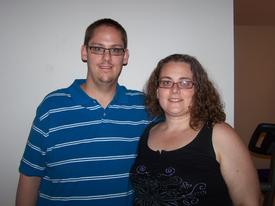HRM's & Fitness Level Question

Bryan190
Posts: 54 Member
I know a lot of people here have confidence in the accuracy of their HRM’s, and I may decide to get one at some point, but I’m wondering how a “good” HRM takes into account fitness levels. For example, if you take well-trained athlete who’s age & height is the same as mine but who weighs 40 lb less and strap a 40 lb pack on his back and send both him and me up a mountain, we are both delivering the same size package to the top of the mountain, but my heart is going to be going at a much higher rate than his. Since calories are a measure of energy which is the ability to do work, and the work of delivering the package to the mountain top is the same for the athlete and me (except he is more efficient), the calculation of calories burned based upon age, weight and HR is going to be much lower for him than me – so how does the HRM account for that?
As a related example based upon my own observation, I have a treadmill with a HRM chest strap that will vary the % slope at a fixed speed to maintain my target heart rate. The treadmill does not know my age, gender, height, weight, or any other info about me – just my HR as I exercise so it’s inherently inaccurate. When I use my treadmill I typically will go for a bit more than an hour at 3.5 mph and a target HR of 125 bpm. As my fitness has improved the treadmill has been increasing the average slope and as a result it has been reporting an increasing number of calories for the same amount of time and target HR, which makes sense because I’m climbing an ever-increasing mountain. While my treadmill HRM does not know anything about me but does know how high the mountain was, a “good” HRM would not know the slope changes – only that the better-condition me had the same HR for that time as the worse-condition me.
So to summarize my question, what does a “good” HRM know about you other than age, gender, height, & weight to arrive at an accurate calorie count taking into account your level of fitness, and how does it know it?
As a related example based upon my own observation, I have a treadmill with a HRM chest strap that will vary the % slope at a fixed speed to maintain my target heart rate. The treadmill does not know my age, gender, height, weight, or any other info about me – just my HR as I exercise so it’s inherently inaccurate. When I use my treadmill I typically will go for a bit more than an hour at 3.5 mph and a target HR of 125 bpm. As my fitness has improved the treadmill has been increasing the average slope and as a result it has been reporting an increasing number of calories for the same amount of time and target HR, which makes sense because I’m climbing an ever-increasing mountain. While my treadmill HRM does not know anything about me but does know how high the mountain was, a “good” HRM would not know the slope changes – only that the better-condition me had the same HR for that time as the worse-condition me.
So to summarize my question, what does a “good” HRM know about you other than age, gender, height, & weight to arrive at an accurate calorie count taking into account your level of fitness, and how does it know it?
0
Replies
-
A HR monitor has your information and yours alone. It picks up your HR. THe Treadmill will be an average. CHeck out Polarusa.com0
-
If you look at what is required to calculate calories burned, it has everything it needs to do this. Usually people who are in better shape like your athlete carrying something up the mountain burn less because their HR would be lower so they would burn fewer calories than someone who isnt in as good as shape the body would be more taxed and would have higher HR.0
-
Hmmm. So in my second example the worse-condition me who climbs 370 vertical feet in one hour (2% grade) consumes the same number of calories as the better-condition me who climbs 740 vertical feet in one hour (4% grade) – all other things being equal? That would assume the extra work done in climbing the additional 370 feet is exactly offset by the less work done by my body internally due to better conditioning, and my treadmill crediting me with more calories burned for climbing the extra 370 feet is wrong. While I understand there is some offset due to conditioning, it seems a bit too convenient that there is no other difference and that the “good” HRM can ignore vertical climb and still be accurate. I’d like to read more about this if someone knows of any links to technical reports that support HR as the only variable parameter needed to measure calories burned for the same size person at different times with different fitness levels and different exercise type. If I’m going to spend more than $100 on an HRM I’d like to have a bit more confidence in what it’s telling me.0
-
Hmmm. So in my second example the worse-condition me who climbs 370 vertical feet in one hour (2% grade) consumes the same number of calories as the better-condition me who climbs 740 vertical feet in one hour (4% grade) – all other things being equal? That would assume the extra work done in climbing the additional 370 feet is exactly offset by the less work done by my body internally due to better conditioning, and my treadmill crediting me with more calories burned for climbing the extra 370 feet is wrong. While I understand there is some offset due to conditioning, it seems a bit too convenient that there is no other difference and that the “good” HRM can ignore vertical climb and still be accurate. I’d like to read more about this if someone knows of any links to technical reports that support HR as the only variable parameter needed to measure calories burned for the same size person at different times with different fitness levels and different exercise type. If I’m going to spend more than $100 on an HRM I’d like to have a bit more confidence in what it’s telling me.
HRMs are a tool to be used, they are in no way 100% accurate to tell you absolulely you went 4% grade and with these GPS cordinates.
The calculation for calories burned is a general one and its what most HRMs use, the accuracy of the HRM tends to be how accurately it can get your HR for the calculation, which is why the ones with chest straps tend to do this better.
I think you are over complicating the process.0 -
I have an older model Polar HRM that knows how old I am, my height, weight and that I am a female. I really use it as a tool to know that my heart rate is in the "zone" for whatever exercise I am doing and that I am working as hard as I can without going anaerobic (too much). It consistently tells me I have burned fewer calories than a cardio machine even if that machine is picking up my chest strap reading.
This morning, my HRM told me I burned 626 calories during my 60 minute really challenging spin class and the incredibly fit, marathon runner on the bike next to me with the exact same HRM showed that she burned 378. This would be another reason I don't eat back ALL my exercise calories.0 -
My HRM asked me for my fitness level (based on levels 1-3) when I was programming it.0
-
Thanks for the replies. I know I can't believe my treadmill since it knows nothing about me except how high I climbed and how far I went. Sounds like all the HRM's just know gender, height, weight, age and of course bpm and just make assumptions on that - nothing more. So I guess I'll stay with the various free online estimators and know I shouldn't trust them enough to eat all my exercise calories.0
-
This morning, my HRM told me I burned 626 calories during my 60 minute really challenging spin class and the incredibly fit, marathon runner on the bike next to me with the exact same HRM showed that she burned 378. This would be another reason I don't eat back ALL my exercise calories.
This would make sense, people in better shape burn less calories, and comparing two peoples calories in an activity like that really isnt equal because spinning depends on resistance and how much effort.
If you arent in the same marathon runner shape and have a few extra pounds, then you would burn more because your body has to work harder to do the same work0 -
My HRM does have an input for level of fitness-- if you set it to 'fit' it will calculate a slightly lower calories burn, I've found. People frequently point out that HRMs are generally very acurate at keeping track of your heart rate, but that the 'calories burned' is always just an estimate based on your heart rate and whatever other factors you enter into the monitor. The more they know about you, the higher the potential for accuracy.
So, because the HRM knows your heart rate as your exercise and whatever additional info you put in, it will probably be more accurate than an online estimate, which relies on an average figure...I think the default setting for most of these is a 150-pound adult. If you work out on a treadmill, elliptical, etc. you can usually enter your weight and gender, but they still estimate quite high...about 1/3 higher than my HRM.0 -
I am a walker. When I started I walked a three mile route at 3.5 and burned about 500 calories per my HRM. Now that I have lost 52 lbs. the same route at the same speed will only burn around 250 calories. The more fit you become the more it will take to get your heart rate up. So if you want the same calorie burn you will need to increase the amount of time or the speed at which you do it.0
This discussion has been closed.
Categories
- All Categories
- 1.4M Health, Wellness and Goals
- 397K Introduce Yourself
- 44.2K Getting Started
- 260.9K Health and Weight Loss
- 176.3K Food and Nutrition
- 47.6K Recipes
- 232.8K Fitness and Exercise
- 456 Sleep, Mindfulness and Overall Wellness
- 6.5K Goal: Maintaining Weight
- 8.7K Goal: Gaining Weight and Body Building
- 153.3K Motivation and Support
- 8.3K Challenges
- 1.3K Debate Club
- 96.5K Chit-Chat
- 2.6K Fun and Games
- 4.6K MyFitnessPal Information
- 16 News and Announcements
- 18 MyFitnessPal Academy
- 1.4K Feature Suggestions and Ideas
- 3.1K MyFitnessPal Tech Support Questions



